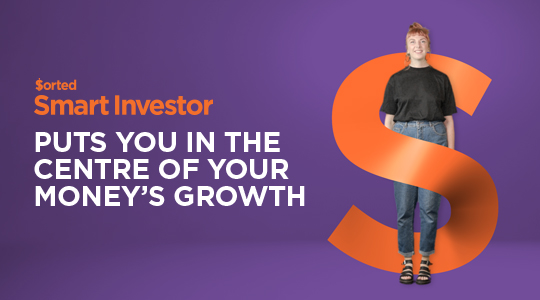
Planning & budgeting
Saving & investing
KiwiSaver
Tackling debt
Protecting wealth
Retirement
Home buying
Life events
Setting goals
Money tracking
Plan your spending with a budget
Getting advice
Studying
Get better with money
What pūtea beliefs do you have?
How to build up your emergency savings to cover unexpected costs
How to save your money
How to start investing
Find a financial adviser to help you invest
Your investment profile
Compound interest
Net worth
Types of investments
Term deposits
Bonds
Investment funds
Shares
Property investment
How KiwiSaver works and why it's worth joining
How to pick the right KiwiSaver fund
Make the most of KiwiSaver and grow your balance
How KiwiSaver can help you get into your first home
Applying for a KiwiSaver hardship withdrawal
How to use buy now pay later
What you really need to know before you use credit
How to get out of debt quickly
Credit reports
Know your rights
Pros and cons of debt consolidation
Credit cards
Car loans
Personal loans
Hire purchase
Student loans
Getting a fine
What happens if I start to struggle with moni?
How to protect yourself from fraud and being scammed
About insurance
Insurance types
Insuring ourselves
Wills
Enduring powers of attorney
Family trusts
Insuring our homes
Losing a partner
Redundancy
Serious diagnosis
How to cope with the aftermath of fraud
Separation
About NZ Super – how much is it?
When you’re thinking of living in a retirement village
How to plan, save and invest for retirement
Manage your money in retirement
Find housing options in retirement
Four approaches to spending in retirement
Planning & budgeting
Saving & investing
How to build up your emergency savings to cover unexpected costs
How to save your money
How to start investing
Find a financial adviser to help you invest
Your investment profile
Compound interest
Net worth
Types of investments
Term deposits
Bonds
Investment funds
Shares
Property investment
View all
KiwiSaver
Tackling debt
How to use buy now pay later
What you really need to know before you use credit
How to get out of debt quickly
Credit reports
Know your rights
Pros and cons of debt consolidation
Credit cards
Car loans
Personal loans
Hire purchase
Student loans
Getting a fine
What happens if I start to struggle with moni?
View all
Protecting wealth
Retirement
Home buying
1 March 2019
Reading time: 2 minutes
Posted by Tom Hartmann,
0 comments

What’s good? What’s not? How can you tell?
Sometimes you can go by how you feel or connect with something or someone. Like the vibe you get when you gel with a new friend, or a feeling when you step into a fabulous place.
But most other times, to know if something’s good or not, you need to compare. Does this dish taste better than other things you’ve had? Is it sweeter, saltier, spicier? There’s usually a comparison that helps you decide.
The thing with money is that it’s hard to tell if something’s good. You need to compare a financial product to its peers, to put it in its proper context.
In the world of KiwiSaver and investing, Sorted’s new Smart Investor lets you compare meaningfully – precisely so you can see what’s good and what’s… not so much.
Let’s say I tell you a rate of 2%. Is that a good deal? Even if you know whether that is interest you have to pay or interest you will receive, you still need to put it in context. How does it compare?
A 2% fee you have to pay to be in KiwiSaver or a managed fund, for example, would be high – a lot to pay.
How do I know? Smart Investor shows us the average for all KiwiSaver funds (0.94%) and other managed funds (1.26%), which makes 2% look pretty pricey. (That said, the most expensive fund is a whopping 4.71%, so that says something too.)
On the other hand, a return of 2%, even after fees and taxes have been taken out, would be relatively low.
The average KiwiSaver return over the past five years has been 6.71%, and some of the high flyers have returned 11% or even as high as 12.59% to investors.
But again, it’s hard to tell until you put something in context. Smart Investor shows you the averages for all the major types of KiwiSaver funds, so you can see easily how yours stacks up.
Context is king – so have a look at Smart Investor to find out where you’re at, and where you could be.

Use verification code from your authenticator app. How to use authenticator apps.
Code is invalid. Please try again
Don't have an account? Sign up
Or log in with our social media platforms


A free account gives you your very own space where you can save your tools and track your progress as you get ahead.
Or sign up using Google:



Comments (0)
Comments
No one has commented on this page yet.
RSS feed for comments on this page | RSS feed for all comments